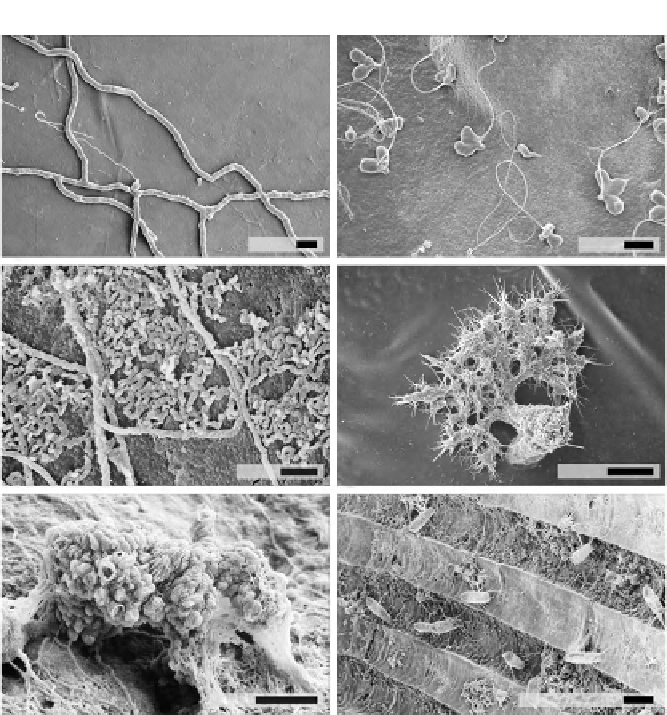Environmental Engineering Reference
In-Depth Information
A
B
30
m
m
30
m
m
C
D
100
m
m
10
m
m
E
F
30
m
m
300
m
m
FIGURE 7
SEM images of casted microborings produced by various chemotrophs. (A)
Orthogo-
num lineare
, recent, Faial, Azores, 500 m water depth. (B)
Flagrichnus baiulus
, Svalbard, Norway.
(C)
Scolecia serrata
, Carboniferous, Buckhorn Asphalt Lagerst¨tte, USA. (D)
Semidendrina
pulchra
, recent, Faial, Azores, 60 m water depth. (E)
Entobia mikra
, Pleistocene, Rhodes, Greece.
(F)
Imergentia
isp., Pleistocene, Rhodes, Greece.
The ichnofamily Dendrinidae bears a number of distinct fan-shaped traces, the
identity of which is not entirely solved either, even though the most likely candi-
dates are naked foraminiferans as discussed for
Semidendrina pulchra
(
Bromley
et al., 2007
;
Fig. 7
D). Fossil representatives of this ichnofamily comprise the
ichnogenera
Dendrina
,
Clionolithes
,
Dendrorete
,
Nododendrina
,
Platydendrina
,
Ramodendrina
,
Pyrodendrina
,and
Hyellomorpha
, which are most diverse in the
Devonian and Cretaceous (
Hofmann, 1996; Vogel et al., 1987
).
With respect to the important group of mainly macroboring sponges, two
dwarf forms have been described, as there are the ichnospecies
Entobia mikra
(
Fig. 7
E) and
Entobia nana
(
Wisshak, 2008
), the biotaxonomical identities of
which have not been revealed as yet.
Finally, there is a diverse set of bioeroding ctenostome bryozoans that have
produced characteristic networks of
large microborings since the Early









Search WWH ::

Custom Search